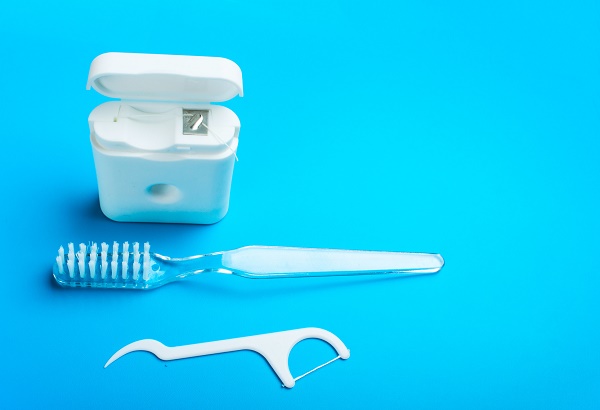
Focus on the Floss
The one daily oral habit that is just so important we dentists have to stress it all the time is flossing. If you’ve ever been to our Melbourne, Florida office we’re sure you’ve heard one of our hygienists and even Dr. Brazdo herself remind you how important flossing is to your oral health. However, even though this part of your routine is so important, many people skip the step all together. The most important part of cleaning your teeth is removing the food and plaque that enables bacteria to alter the pH of the mouth. Flossing is an effective way to do this and thankfully there is more than one way to achieve oral cleanliness.
Why Is Flossing So Important
Flossing is an extremely important part of an oral health routine because it is a relatively easy way to remove food particles, bacteria, and plaque from the most difficult to reach areas of the mouth. Using a length of waxed string you can reach in between the teeth and even below the gum line. Food can easily become trapped in these areas and if not removed can facilitate the development of dental caries. Further the plaque that forms and is a precursor to cavities, can make its way beneath the gums and cause the gums to pull away and become inflamed. Gum inflammation can cause pain and bleeding, but more seriously it can develop into periodontal disease. Periodontal disease is a serious condition that can cause tooth and bone loss and has even been linked to several chronic conditions throughout the body.
What Are My Options?
When it comes to flossing, many patients are surprised that they have more than one option in cleaning these hard-to-reach areas.
Traditional Floss
Traditional floss is what most people are used to and terrified of. This spool of thread can be very versatile as it can be made into any length. When wrapped around the fingers it can be maneuvered around the mouth in between teeth. The problem with this method of flossing lies in dexterity and familiarity. Some people cannot get their fingers in their mouth easily enough to put the floss where it needs to go. Others are not confident in their ability to move this thread in between their teeth. Instead of choosing to not floss, these patients should know there are other ways.
Pre-threaded Flossers
Pre-threaded flossers are small plastic appliances that are already equipped with a length of floss. You can use one hand to move this object in between your teeth. Some even come attached to a handle that closely resembles a tooth brush. This makes removing food, plaque and bacteria from in between the teeth as simple as brushing them.
Water Picks
A water pick is the third, and some may think, easiest option when it comes to flossing the teeth. Foregoing floss for a concentrated stream of water, this apparatus sits on your counter top and uses electricity to send a blast of water to your teeth. This stream massages the gums and ejects food particles from in between the teeth and can even get below the gum line. Straying so far from tradition makes many patients wonder if this type of flossing is effective. Thankfully, a study was conducted to answer that very question. The study, published in the Journal of Clinical Dentistry found that people who use a waterpik had a 74 percent decrease in plaque as compared to the 54 percent reduction in plaque that users of traditional plaque saw. This may be due to the fact that the users of the water pick were more confident in their ability to remove debris, or perhaps that the flossers were not flossing correctly. Either way, this is great news for people who cannot work with traditional floss or pre-threaded flossers.
No matter what your oral routine entails one thing is for certain, removing food, plaque, and bacteria from in between your teeth is extremely important if you wish to prevent tooth decay and gum inflammation. If you have questions about how you can best do this, don’t hesitate to ask your dental hygienist at your Melbourne, Florida dentist’s office today.

